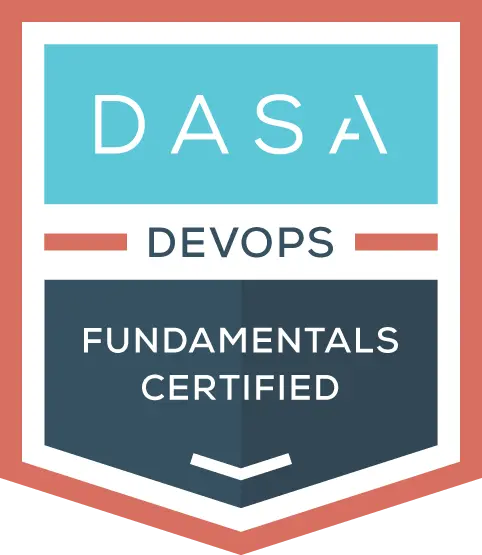Many organizations struggle with siloed teams, which impedes synergy and collaboration, ultimately affecting their growth and agility. Breaking down these silos and fostering a culture of cross-functional collaboration can significantly enhance an organization’s ability to execute its strategy and achieve its goals. This article discusses how organizations can shift from working in isolation to achieving synergy based on the principles and practices shared by Bas ter Heurne.
The Challenge of Silos in Organizations
Silos are organizational units that operate independently and often in isolation from one another. This isolation can lead to inefficiencies, miscommunication, and a lack of alignment with the overall organizational goals. Silos hinder the flow of information and collaboration, making it difficult for organizations to both respond quickly to market changes and to innovate effectively.
Silos can be detrimental to an organization’s performance. For example, in many companies, sales and marketing teams often blame each other for not achieving targets, with sales accusing marketing of providing low-quality leads and marketing accusing sales of not following up on leads. This lack of unity within departments can mirror the larger issue of organizational silos, where different units focus solely on their objectives without considering the broader organizational goals.
To address the challenges posed by silos, organizations must foster a sense of unity and collaboration across departments. This involves creating cross-functional teams that work together towards common goals. Such teams can include members from sales, marketing, product management, operations, and other relevant departments, ensuring that all perspectives are considered and aligned with the organizational strategy.
The Role of Obeya in Transformation
Obeya, a term originating from Japanese manufacturing practices, refers to a “big room” where all relevant stakeholders come together to collaborate and make decisions. This concept can be adapted to modern organizations as a transformation tool to enhance transparency, communication, and collaboration.
Implementing Obeya involves setting up a mission control room where teams can monitor progress, discuss issues, and make decisions collaboratively. This room acts as a cockpit for managing the transformation process, providing a centralized space for tracking key performance indicators (KPIs), conducting retrospectives, and planning future actions.
Using Obeya helps break down silos by encouraging open communication and transparency. It allows all team members to understand the organization’s objectives and their role in achieving them. This approach fosters a culture of continuous improvement and agile decision-making, enabling organizations to respond more effectively to changes and challenges.
Creating Cross-Functional Value Creation Teams
Another key strategy for breaking down silos is the formation of cross-functional teams focused on value creation. These teams are responsible for developing and delivering value propositions that address customer needs and drive organizational growth.
Building Effective Teams
To build effective cross-functional teams, organizations should:
- Identify Key Stakeholders: Include representatives from various departments such as sales, marketing, product management, and operations.
- Define Clear Objectives: Ensure that the team has a clear understanding of the organizational goals and their role in achieving them.
- Foster Collaboration: Encourage open communication and collaboration among team members, leveraging diverse perspectives to develop innovative solutions.
- Monitor Progress: Use tools like Obeya to track progress, address issues, and make adjustments as needed.
Embracing a Customer-Centric Approach
Transforming an organization requires a shift from an inside-out to an outside-in perspective. This means focusing on understanding and addressing customer needs rather than solely promoting internal capabilities and products.
Engaging with customers is essential for creating value propositions that meet their needs. By conducting interviews and gathering feedback, organizations can better understand customer pain points, goals, and preferences. This customer-centric approach ensures that value propositions are both relevant and compelling, leading to stronger connections with the target audience. Through customer interviews and surveys, organizations can gather insights to tailor their value propositions, while developing detailed buyer personas helps guide marketing and sales strategies to better align with customer expectations and drive growth.
The Importance of Agility and Continuous Improvement
Agility can be a major approach to breaking down silos in your organization. Agility and continuous improvement are essential for successful transformation and strategy execution. Organizations must be able to adapt quickly to changes in the market and continuously refine their processes and strategies to stay competitive. Adopting agile practices, such as regular retrospectives and iterative planning, helps organizations remain flexible and responsive. These practices promote a culture of continuous improvement and enable teams to quickly address issues and seize opportunities. Regular measurement and monitoring of progress are critical for ensuring that transformation efforts are on track. Organizations should use tools and frameworks like Obeya to track KPIs, identify bottlenecks, and make data-driven decisions.
Conclusion
Transformation and strategy execution are complex but essential processes for organizations aiming to thrive. By breaking down silos, fostering cross-functional collaboration, and adopting customer-centric and agile practices, organizations can enhance their ability to execute their strategies and achieve their goals. The principles and practices outlined provide a valuable roadmap for organizations seeking to move from silos to synergy, ultimately driving greater efficiency, innovation, and growth.


DASA DevOps Certification Program
DASA DevOps Certification Program equips you with the foundational skills to understand and implement key DevOps principles. You’ll learn how to foster collaboration across teams, streamline workflows, and accelerate delivery cycles—all while ensuring your organization is prepared for long-term digital transformation.
